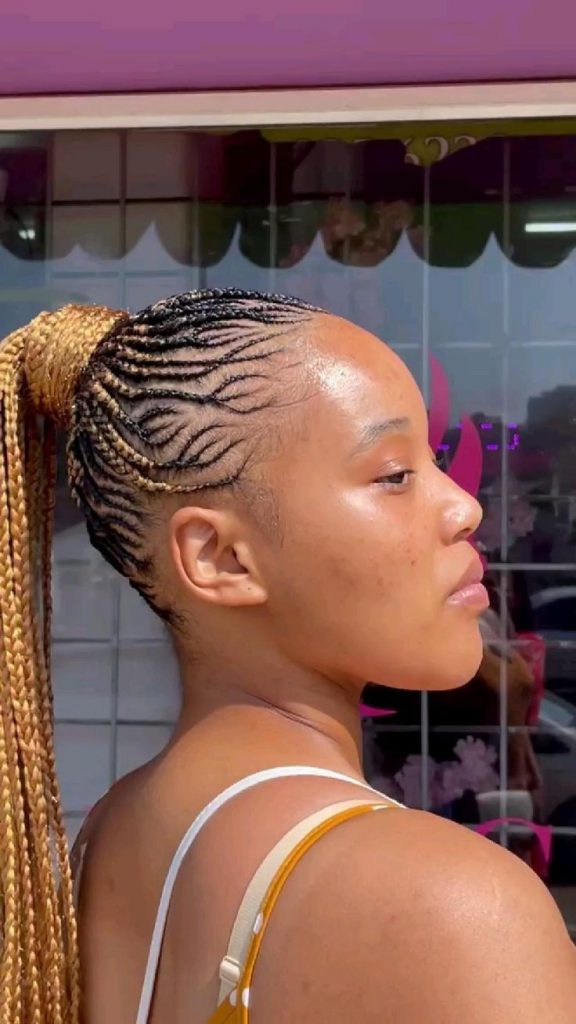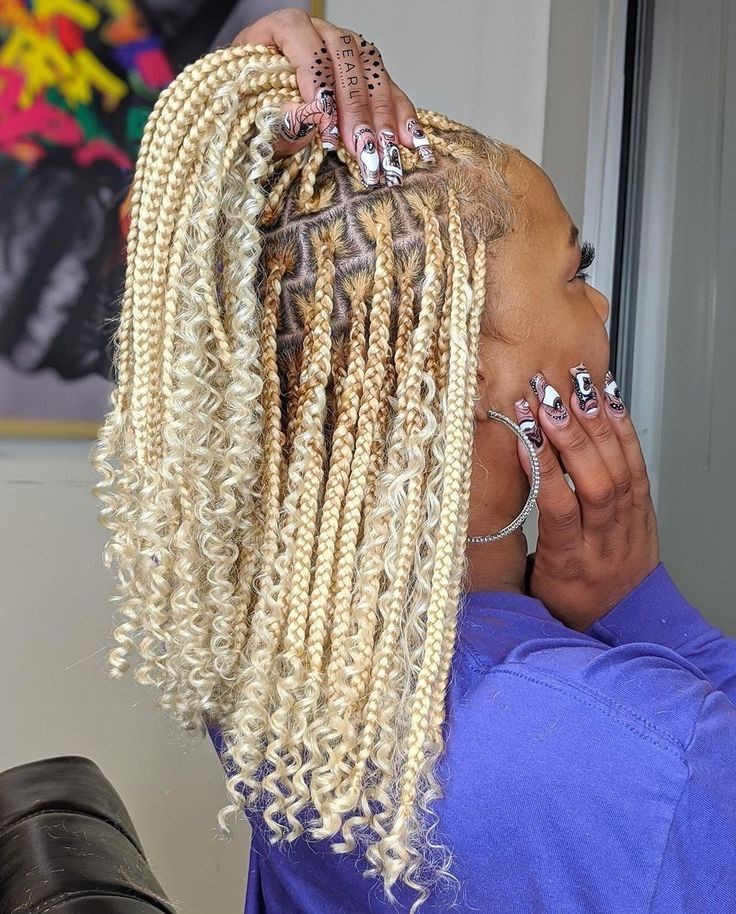West African Hair Braiding Photos: Celebrating Cultural Beauty
Hair braiding is not just a hairstyle; it's a vibrant expression of culture, identity, and artistry. West African hair braiding photos have become a powerful medium to showcase the intricate designs and traditions that have been passed down through generations. From the streets of Lagos to the global stage, these styles tell stories of heritage and creativity. In this article, we'll dive deep into the world of West African hair braiding, exploring its history, techniques, and the stunning visuals that make it a global sensation.
As social media platforms continue to grow, the popularity of West African hair braiding photos has skyrocketed. These images not only celebrate the beauty of African culture but also inspire people worldwide to embrace their roots and express themselves through unique hairstyles. This article will explore how these photos have become an essential part of modern beauty trends while maintaining their cultural significance.
Whether you're a hairstylist, a culture enthusiast, or someone simply curious about the art of braiding, this comprehensive guide will provide you with valuable insights into West African hair braiding. Let's embark on this journey together and uncover the beauty behind every strand.
- Angela Bassett Swimsuit
- Pole Vaulter Crotch Olympics
- Meg The Stallion Without Makeup
- Michelle Buteau Net Worth
- Nessa Diab Baby Name
Table of Contents
- The Rich History of West African Hair Braiding
- Traditional Techniques and Modern Innovations
- Exploring West African Hair Braiding Photos
- Popular West African Braiding Styles
- Cultural Significance of Hair Braiding
- The Role of Social Media
- Celebrating West African Hair Artists
- Essential Tools for Braiding
- Tips for Maintaining Braided Hairstyles
- The Future of West African Hair Braiding
The Rich History of West African Hair Braiding
West African hair braiding has a history that dates back thousands of years. Archaeological evidence suggests that braiding was practiced as early as 3500 BC in regions such as Nubia and ancient Egypt. These hairstyles were not just for aesthetic purposes but also served as a form of communication within communities. Patterns and styles could indicate a person's social status, age, marital status, and even tribal affiliations.
Evolution of Braiding Techniques
Over time, the art of braiding evolved, incorporating new techniques and materials. The introduction of trade routes brought different tools and ideas, influencing the way hair was styled. Today, many of these traditional methods are still used, but they have been adapted to fit modern lifestyles and preferences.
According to a study published in the Journal of African Cultural Studies, "hair braiding has always been a communal activity, bringing people together and strengthening social bonds." This tradition continues to thrive, with hairstylists often working in groups to create elaborate designs.
- Alissa Violet Jason Nash
- Mercury Square Uranus Astrology
- Stephen Love Is Blind African
- Scott Disick Addiction
- When Will Wicked Be Able To Rent
Traditional Techniques and Modern Innovations
While traditional techniques remain at the heart of West African hair braiding, modern innovations have expanded the possibilities for hairstylists. From cornrows to box braids, each style has its own unique method and cultural significance. Below are some of the most popular techniques:
- Cornrows: A classic style where hair is braided close to the scalp, creating intricate patterns.
- Box Braids: Thick braids that are divided into sections, often adorned with beads or extensions.
- Ghana Braids: Similar to cornrows but thicker and often wrapped with additional hair.
- Senegalese Twists: Twisted braids that are often adorned with colorful threads or beads.
Blending Tradition with Modernity
Modern hairstylists are finding creative ways to blend traditional techniques with contemporary styles. This fusion has led to the emergence of new trends that appeal to a global audience while maintaining cultural authenticity.
Exploring West African Hair Braiding Photos
West African hair braiding photos have become a powerful tool for showcasing the artistry and creativity behind these hairstyles. Platforms like Instagram and Pinterest are filled with stunning visuals that highlight the intricate details and vibrant colors associated with West African braiding.
These photos not only serve as inspiration for individuals seeking new hairstyles but also as a way to preserve and celebrate cultural heritage. Many photographers collaborate with hairstylists to capture the beauty of these designs, ensuring that they are represented authentically.
Popular Photography Styles
Photographers often use specific techniques to enhance the visual appeal of West African hair braiding photos:
- Close-up Shots: Highlighting the intricate patterns and textures of the braids.
- Natural Lighting: Using sunlight to bring out the natural beauty of the hair.
- Cultural Backdrops: Incorporating traditional African fabrics and settings to add context to the images.
Popular West African Braiding Styles
There are countless West African braiding styles, each with its own unique characteristics. Below are some of the most popular styles that have gained international recognition:
- Feed-in Braids: A technique where hair is added during the braiding process to create longer, fuller braids.
- Senegalese Twist Braids: Twisted braids that are often adorned with colorful threads or beads.
- Bantu Knots: Small knots created by twisting the hair into tight spirals.
- Jumbo Braids: Thick braids that are often styled in bold, statement-making designs.
Choosing the Right Style for You
When selecting a braiding style, it's important to consider factors such as hair type, length, and personal preferences. Consulting with a professional hairstylist can help you find the perfect style that suits your needs and enhances your natural beauty.
Cultural Significance of Hair Braiding
Hair braiding in West Africa is more than just a hairstyle; it is a cultural practice steeped in tradition and meaning. In many communities, the act of braiding hair is seen as a form of storytelling, with each style conveying a specific message or story.
For example, in some tribes, specific braiding patterns are reserved for weddings, funerals, or other significant life events. These patterns are passed down through generations, ensuring that the cultural significance of hair braiding is preserved.
Empowerment Through Braiding
In recent years, West African hair braiding has become a symbol of empowerment and self-expression. Women and men alike are embracing their natural hair and using braiding as a way to celebrate their heritage and identity.
The Role of Social Media
Social media platforms have played a pivotal role in popularizing West African hair braiding photos. Influencers and hairstylists use these platforms to share their work, reach new audiences, and connect with clients from around the world.
According to a report by Statista, Instagram alone has over 2 billion active users, providing a vast audience for hairstylists to showcase their skills. Hashtags such as #WestAfricanBraids and #BraidingArt have become popular, making it easier for people to discover and appreciate the art of braiding.
Building Communities Online
Social media has also facilitated the creation of online communities where hairstylists, photographers, and enthusiasts can share tips, collaborate on projects, and support one another. These communities have helped to elevate the status of West African hair braiding on the global stage.
Celebrating West African Hair Artists
Behind every stunning West African hair braiding photo is a talented artist who has dedicated their life to mastering the craft. These hairstylists often train for years to perfect their techniques and create designs that are both beautiful and culturally significant.
Some of the most renowned West African hair artists include:
- Natasha Kweku: Known for her intricate cornrow designs and bold color combinations.
- Aisha Salaudeen: A hairstylist and cultural advocate who promotes African hairstyles through her work.
- Bisi Silva: An artist and curator who uses hair as a medium to explore themes of identity and culture.
Supporting Local Artists
Supporting local hairstylists and artists is crucial for preserving the cultural significance of West African hair braiding. By choosing to work with local professionals, you not only receive a unique hairstyle but also contribute to the growth and sustainability of the industry.
Essential Tools for Braiding
Creating stunning West African braids requires the right tools and materials. Below is a list of essential items that every hairstylist should have:
- Wide-tooth comb: For detangling and sectioning hair.
- Scissors: For trimming and shaping braids.
- Extension hair: To add length and volume to the braids.
- Beads: For decorating and personalizing the braids.
Maintaining High Standards
Using high-quality tools and materials is essential for ensuring the longevity and beauty of braided hairstyles. Hairstylists should also stay updated on the latest trends and techniques to provide their clients with the best possible service.
Tips for Maintaining Braided Hairstyles
Once you've invested in a beautiful braided hairstyle, it's important to take proper care of it to ensure it lasts as long as possible. Below are some tips for maintaining your braids:
- Moisturize regularly: Use a leave-in conditioner or oil to keep your scalp and hair hydrated.
- Protect at night: Wear a silk or satin scarf to prevent friction and damage.
- Avoid excessive touching: Minimize handling to prevent loosening or tangling.
- Visit your stylist: Schedule regular touch-ups to maintain the style's integrity.
Extending the Life of Your Braids
With proper care, braided hairstyles can last several weeks, allowing you to enjoy your look without frequent trips to the salon. Following these tips will help you get the most out of your braids while maintaining their beauty and structure.
The Future of West African Hair Braiding
As the world becomes increasingly connected, the future of West African hair braiding looks brighter than ever. The art form continues to gain recognition on the global stage, with more people embracing its beauty and cultural significance.
Advancements in technology and increased access to education will likely lead to even more innovative styles and techniques, ensuring that West African hair braiding remains a vibrant and evolving art form.
Embracing Cultural Heritage
By celebrating and supporting West African hair braiding, we honor the rich cultural heritage that has shaped this art form. As we move forward, it is essential to respect and preserve these traditions while encouraging creativity and innovation.
Conclusion
West African hair braiding photos have brought the beauty and artistry of this cultural practice to a global audience. From its rich history to its modern innovations, this art form continues to inspire and empower people around the world. By supporting local artists and embracing our cultural heritage, we can ensure that the tradition of West African hair braiding thrives for generations to come.
We invite you to share your thoughts and experiences in the comments below. Have you tried any of these braiding styles? What is your favorite West African hair braiding photo? Don't forget to follow us on social media for more updates and inspiration. Together, let's celebrate the beauty of West African hair braiding!
- Sweet Marte Death
- Anne Hathaway Jeans
- Country Songs In Movies
- Christmas Card Kardashian 2013
- Matt And Amy Divorce

GALLERY Paulat African Hair Braiding

50+The Best Unique West African Hair Braiding African Hairstyles

50+The Best Unique West African Hair Braiding African Hairstyles